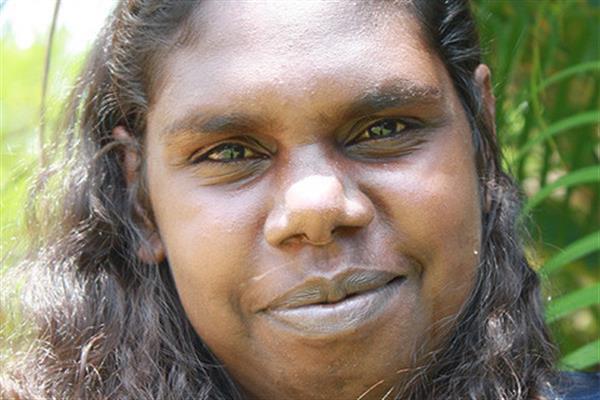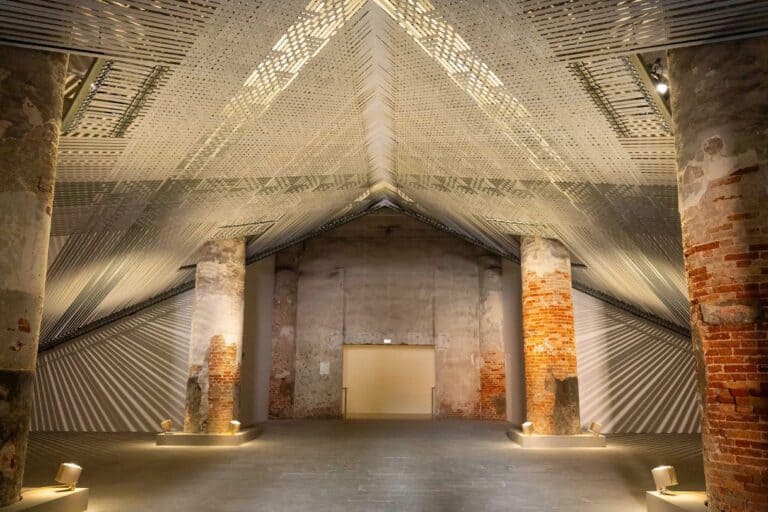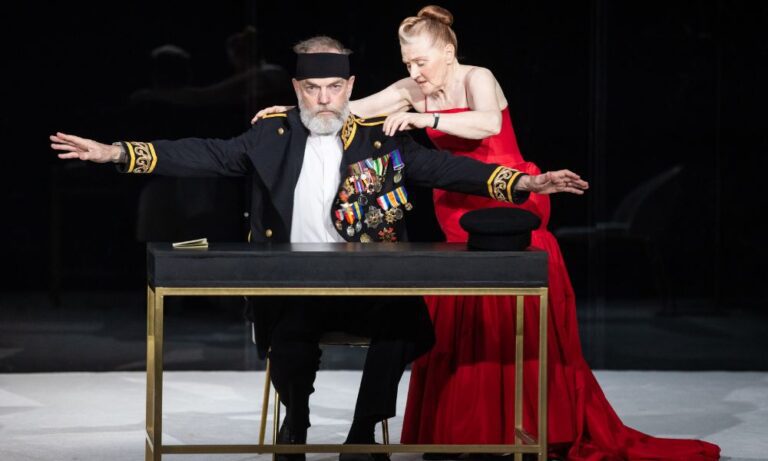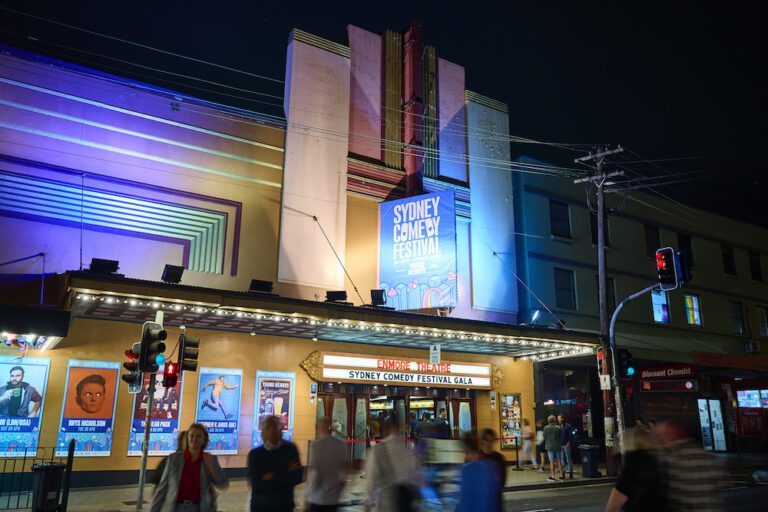What does it mean to you to be part of the National Indigenous Art Fair?
I love to do my art, and I love coming to Sydney. I visited Sydney for the first time when I was a finalist in the MCA’s Primavera Art Award in 2014 and I have been back a few times since.
But this is the first time I will be at the National Indigenous Art Fair with Munupi Art Centre. It will be nice to be with other Indigenous artists in a big gathering in Sydney, meet them and talk to them about their art. I also hope to meet many people who like my paintings, and I can talk about the stories behind them.
How did you first become interested in art?
My grandfather Justin Puruntatameri (now deceased) was an Elder in the Pirlangimpi community. He knew all the old songs and stories like the visits to the Tiwi Islands by Macassan fishermen from across the sea. I would listen to him tell stories of his paintings at the Munupi Art Centre and on country.
As a child, I would watch him paint at the art centre. I would help him clean his pwoja (a comb-like painting tool) and look at how he made the paints. He would always say to me: ‘You should have a go at this. You could be an artist.’ Finally, when I was 24, I decided I would paint. I have been painting at the Munupi Art Centre since 2011.
I’m now entering a lot of competitions and exhibitions. I was selected as a finalist for the Wynne Prize, the Alice Springs Prize and Telstra Natsiaa Award in 2022. That tells me I am doing well as an artist. This year I was also a finalist for the Ramsay Prize in South Australia, which is for artists under 40. My painting for that, Winga, about the tidal movement in the waters around the Tiwi Islands, was reviewed positively in the Sydney Morning Herald in mid-June!
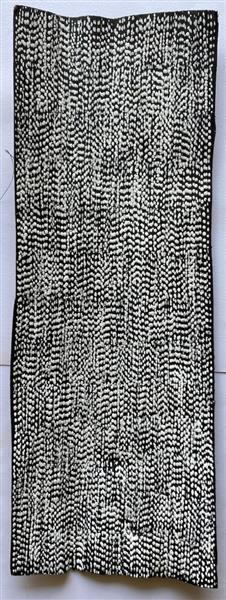
What is your preferred medium or artistic style?
I’m a contemporary Tiwi painter, and I like to paint on both canvas and bark. Bark can be tricky, though, because it’s a rough texture. I’ve been working slowly on my bark paintings!
Can you describe your creative process?
I usually start painting with one colour first and then another, one at a time, working then with lighter colours. One layer of colour at a time, and then layer after layer until I’m happy with the result. When I start to paint, I’m not sure which colours I’ll use. As I go along, I mix our traditional ochre colours to create hues that please me at the time.
How does your Indigenous heritage influence your artwork?
It comes through the Tiwi traditional painting comb, which I use, our traditional ochre colours and the traditional stories I tell about the water, the tidal movement of the Arafura Sea and the creeks around the Tiwi Islands. It also comes through the ripple on the waters and sand, the rhythms of the Tiwi Islands and Tiwi culture.
Can you share any traditional art forms or techniques that you incorporate into your work?
I use natural ochres, which I mix and apply using a pwoja, which is a traditional Tiwi wooden comb that many artists here use instead of brushes. I did start out painting with brushes, but I now prefer the comb. I think the use of the pwoja makes the work from the Tiwi Islands different from anywhere else.
I like to use the traditional colours of the Tiwi Islands in my work – white, red, light pink, and dark pink. I’ll also use light and creamy yellows, greens, and even light browns in my paintings.
I make some paints myself by grinding the ochres. I get the yellow ochres from country on the side of the roads, and the white from the cliffs on the beach. I also mix them to get other colours. We get the red by cooking the yellow. All the colours are mixed with water and acrylic binders to stick on the canvas.
How do you navigate the balance between honouring traditional practices and expressing your own unique artistic voice?
I use the traditional comb and colours, so that’s honouring the practices of the Tiwi Island artists. But in Tiwi culture, you can always develop your own style, and I think I’ve done that well.
Are there any specific themes or subjects that you explore in your artwork?
Water, waves, tides. I have a strong connection to the waters surrounding the Tiwi Islands and many memories from here. I will sit on the beach, collect mussels and fish and get ideas from that. The beaches and the tides of the Arafura Sea inspire me.
Can you describe any mentors or influences who have inspired your creative journey?
It’s always my grandfather. He used to take the family hunting and camping and taught us how to cook wallabies, mussels and fish in paperbark under the ground. I learned a lot from him about the bush, the sea and the old stories. When I was older, I learned how to paint from watching and talking to him.
Thanks to my grandfather, I like to do art, and it has made my life better than if I had done nothing. I’m making a living and travelling in Australia and overseas with my art.
Can you share any personal experiences or stories that have shaped your artistic practice as an artist?
I follow in the footsteps of my grandad Justin Puruntatameri, who was a senior lawman and singer. He only started to paint when he was in his late 60s. He knew all the old songs. I would listen to his stories of his paintings at the art centre and on country. And he told me that I should have a go at painting.
What challenges do you face as an artist?
I’d like to do more paintings and exhibitions. But life can get in the way. I do like to paint at the art centre, but sometimes it can get noisy with lots of people there, and I need quiet. So, I go home to paint. But there’s always stuff to do at home, like clean the house. Then, I have an Aunty whom I love a lot. She is 75, and I’m the one who looks after her. That’s what you do when you’re family. So that takes time, as does looking after my 12-year-old daughter. But I’m not alone in this!
Are there any specific places or environments that inspire your artwork?
I get ideas from sitting at the beach and looking out at the sea. You see it in the sand and silt, how they change the land. Some ideas also come when I’m in the bush camping or fishing, which I love to do.
Event: The National Indigenous Art Fair
Date: Saturday 1 July – Sunday 2 July 2023
Time: 10.00am – 5.00pm
Location: Overseas Passenger Terminal, 130 Argyle St, The Rocks, Sydney
Entry: Entry by gold coin donation
Website: niaf.com.au
Facebook: facebook.com/


